For over 3 decades, my passion has been to assist organizations leverage the business potential of data and analytics and help them envision where and how data and analytics can generate new sources of customer, product and operational value. Maybe my fascination with data and analytics started in my youth with “Strat-o-Matic Baseball” but it certainly caught fire at Metaphor Computers in the 1980’s where I built some of the early Business Intelligence and data warehouse systems. In the 1990’s I joined Sequent Computers where I developed the “Business Benefit Analysis” methodology – a precursor to the “Thinking Like a Data Scientist” methodology. Then at Business Objects, Yahoo, EMC, University of San Francisco, National University of Ireland – Galway and now at Hitachi Vantara, I’ve had the good fortune to work with customers and students to continuously test, tweak and refine the methodology. All of my learnings are captured in my new book “The Art of Thinking Like a Data Scientist.”
Thanks for your joining me on this journey.
To survive in today’s digital economy, it’s imperative for organizations to convert their key business stakeholders into “Citizens of Data Science.” Meaning, they should not only understandwhereand howto apply data science to power the business, but champion adata-first approach toward decision-making across the entire organization.
That’s the subject my new workbook, “The Art of Thinking Like A Data Scientist”, seeks to accomplish. It’s designed to be a pragmatic tool that can help your organization leverage data and analytics to power its business and operational models. The content is jammed with templates, worksheets, examples, and hands-on exercises — all composed to help reinforce and deploy the fundamental concepts of “Thinking Like A Data Scientist.”
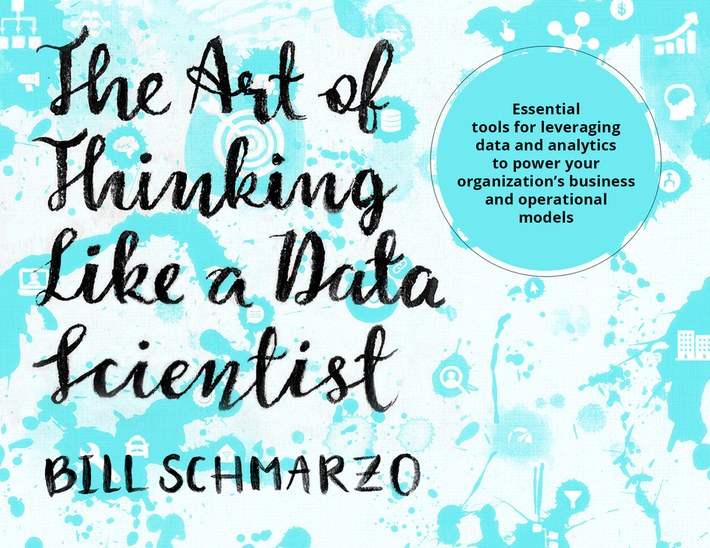
The workbook is comprised of six chapters. Chapters 1, 2 and 3 set the business, data science and design thinking foundation. Chapter 4 covers the “Thinking Like a Data Scientist” methodology in detail, including an example. Chapters 5 (Hypothesis Development Canvas) and 6 (Prioritization Matrix) cover two critically-important components of the methodology. A more detailed delineation of the content in each chapter is listed below.
Chapter 1: Big Data Business Model Maturity Index
Chapter 1 sets the stage for the entire book and addresses the question “How effective is your organization at leveraging data and analytics to power your business models?” while providing a benchmark for an organization to measure itself. The chapter concludes with a series of exercises to help determine not only where your organization sits vis-à-vis this benchmark but provides a roadmap to become more effective at leveraging the business potential of data science.
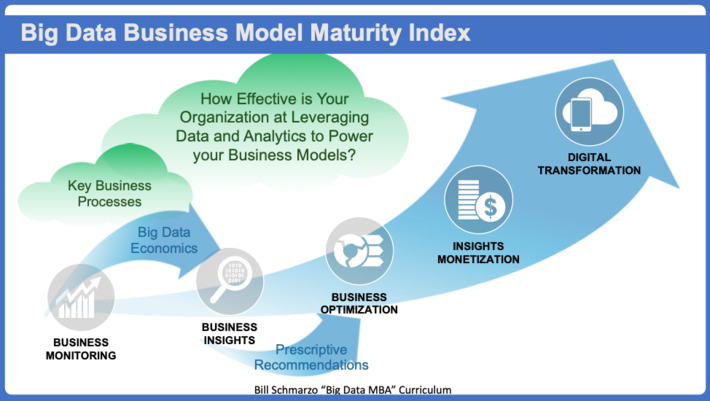
Chapter 2: Understanding the Basics of Data Science
To become more effective at leveraging data and analytics to power your organization’s business models, business stakeholders need a solid understanding of what data science can accomplish. This chapter explains the realm of what’s possible with data science, a layman’s definition of data science (identifying those variables and metrics that might be better predictors of performance), the data science development process, and how business stakeholders – “citizens of data science” – can contribute to an organization’s data science effectiveness.
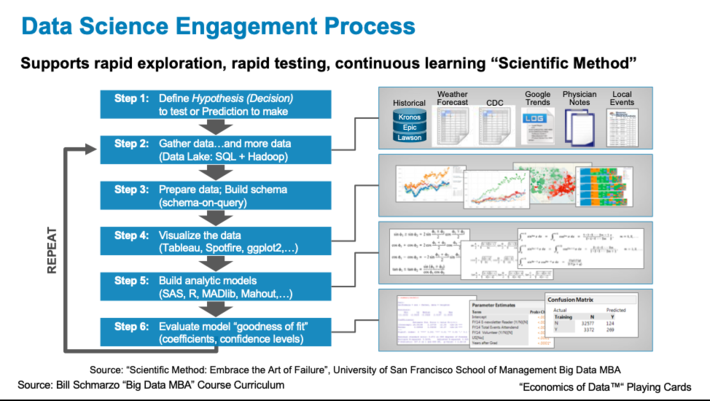
Chapter 3: Design Thinking Humanizes Data Science
Design Thinking and Data Science share many similarities in delivering meaningful, relevant and actionable outcomes within non-linear work environments. Design Thinking exploits the power of mightin fueling data science and business stakeholders’ (and subject matter experts) collaboration to identify variables and metrics that mightbe better predictors of performance. Design Thinking helps drive organizational alignment and adoption around the analytic results. Design Thinking truly does humanize data science.
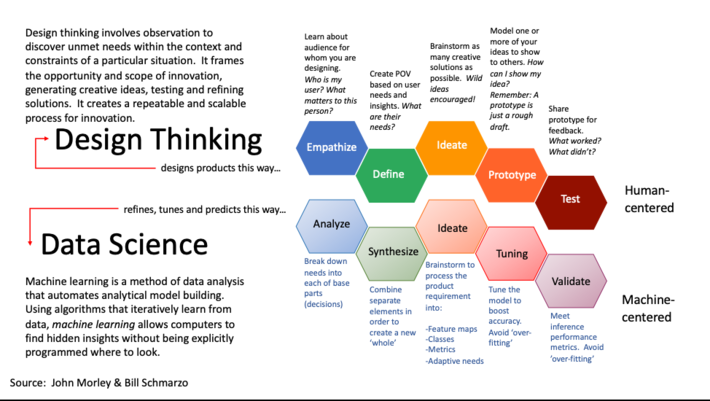
Chapter 4: The “Thinking Like a Data Scientist” Methodology
Ah, the heart of the workbook, the actual methodology itself. This chapter details the 8-step “Thinking Like a Data Scientist” methodology, provides templates, and walks through a detailed example for the reader to readily apply this methodology to help their organizations identify where and how data science can be the source of differentiated customer, product and operational value.
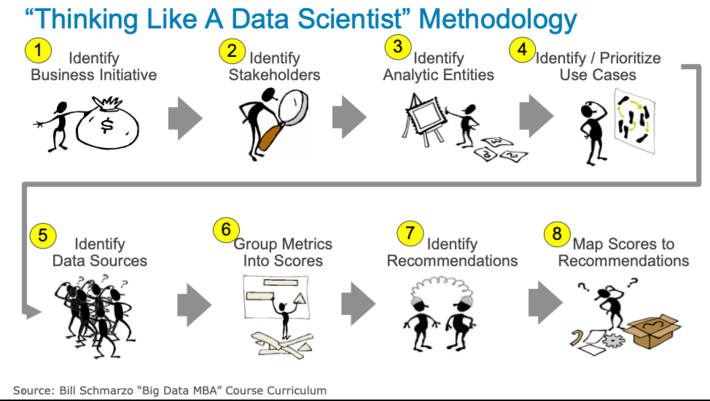
Chapter 5: Hypothesis Development Canvas
Chapter 5 focuses on the most critical output or deliverable from the “Thinking Like A Data Scientist” methodology – the Hypothesis Development Canvas. The Hypothesis Development Canvas codifies the collaboration between the data science team and the business stakeholders to ensure that the data science team has the necessary details to deliver meaningful business impact and relevance. This topic includes details about the targeted use case including use case business or operational objectives, the metrics and KPI’s against which progress and success will be measured, the key stakeholders who have a vested interest in the targeted use case, the entities around which analytics will need to be built, the supporting decisions and predictions, and finally, the costs associated with use case False Positives and False Negatives.
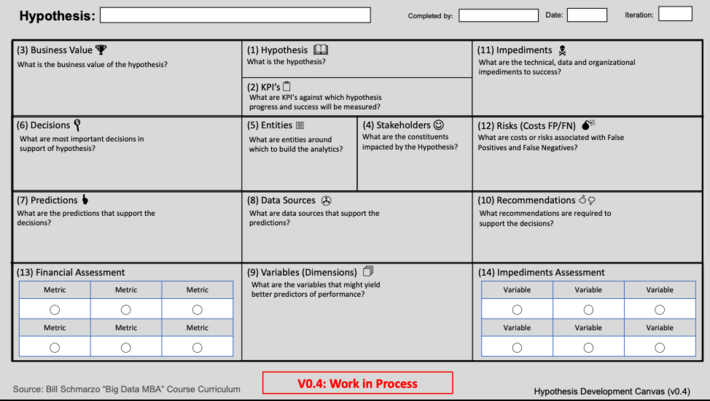 Chapter 6: The Prioritization Matrix Process
Chapter 6: The Prioritization Matrix Process
The workbook concludes with the single most important tool that I’ve found in driving organizational alignment and adoption of the resulting analytics – the Prioritization Matrix. The Prioritization Matrix process leverages several Design Thinking techniques not only to align the key business stakeholders around which use case(s) the data science team should focus but seeks to tease out the passive-aggressive behaviors that doom so many well-intended data science projects. At the end of the day, you can build the world’s most effective predictions, but if no one puts them to use, nothing is gained.
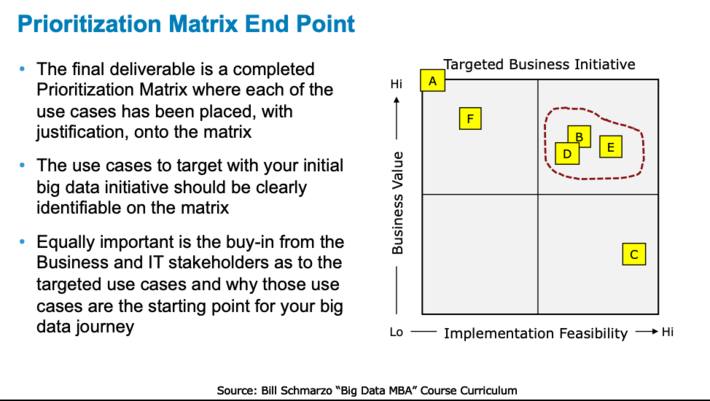
I hope you enjoy the workbook. It’s one of my steps on the path in teaching business stakeholders to “Think Like a Data Scientist,” a culmination of lessons-learned working with clients for many years.
You can pick up your copy of “The Art of Thinking Like a Data Scientist” workbook here.
I look forward to hearing from you with your observations and learnings.
Thanks!
